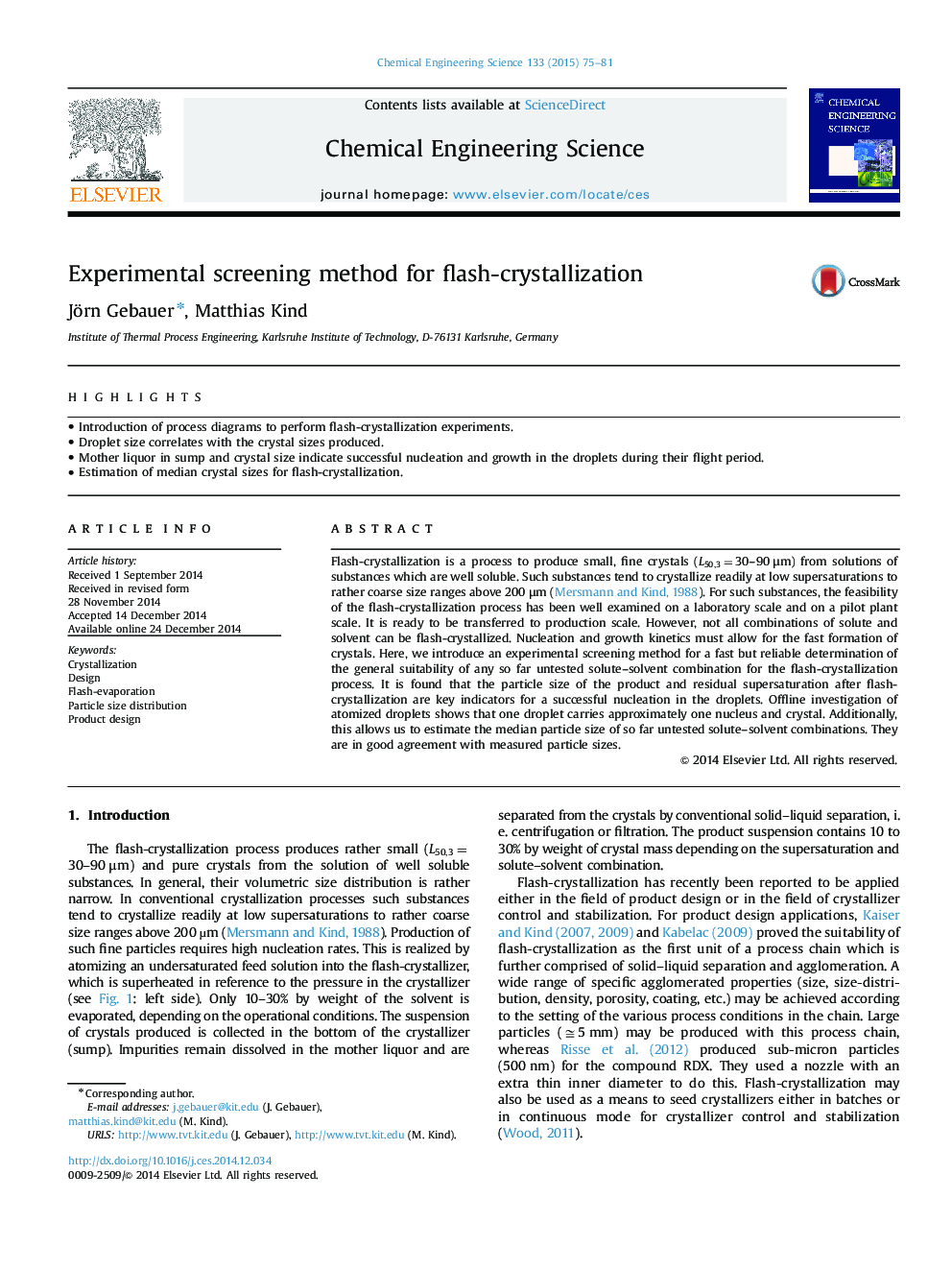| Article ID | Journal | Published Year | Pages | File Type |
|---|---|---|---|---|
| 6589873 | Chemical Engineering Science | 2015 | 7 Pages |
Abstract
Flash-crystallization is a process to produce small, fine crystals (L50,3=30-90μm) from solutions of substances which are well soluble. Such substances tend to crystallize readily at low supersaturations to rather coarse size ranges above 200μm (Mersmann and Kind, 1988). For such substances, the feasibility of the flash-crystallization process has been well examined on a laboratory scale and on a pilot plant scale. It is ready to be transferred to production scale. However, not all combinations of solute and solvent can be flash-crystallized. Nucleation and growth kinetics must allow for the fast formation of crystals. Here, we introduce an experimental screening method for a fast but reliable determination of the general suitability of any so far untested solute-solvent combination for the flash-crystallization process. It is found that the particle size of the product and residual supersaturation after flash-crystallization are key indicators for a successful nucleation in the droplets. Offline investigation of atomized droplets shows that one droplet carries approximately one nucleus and crystal. Additionally, this allows us to estimate the median particle size of so far untested solute-solvent combinations. They are in good agreement with measured particle sizes.
Related Topics
Physical Sciences and Engineering
Chemical Engineering
Chemical Engineering (General)
Authors
Jörn Gebauer, Matthias Kind,
